Behind the lines
- 4 yrsof intense life
- 4,000photographic plates
- 3,000WW1 graffiti
An intense life
in Amiens
Amiens was the scene of a whole host of activities, including those of an industrial nature in the factories used for the war effort and the workshops that were used to create camouflage equipment for the armies. Hospitals were temporarily installed in the city, and various leisure activities were provided for soldiers on leave.
A jewel of Gothic architecture, the Cathedral was scarcely touched during the bombardments of the First World War. After the war, having escaped the conflict almost unharmed, the Cathedral was seen as a memorial to the First World War.
Allied flags now hang in the Sacred Heart Chapel. In the ambulatory, the Weeping Angel represents sorrow and became symbolic of the suffering endured by the soldiers during the war. Postcards of the Weeping Angel were published during the war and sent far and wide throughout the world.
Amiens Tourist Office - +33 (0)3 22 71 60 50
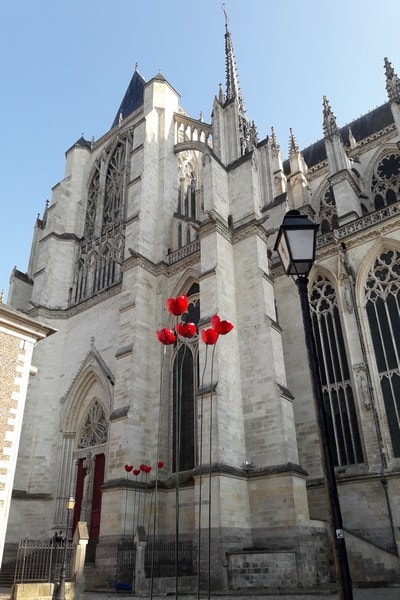
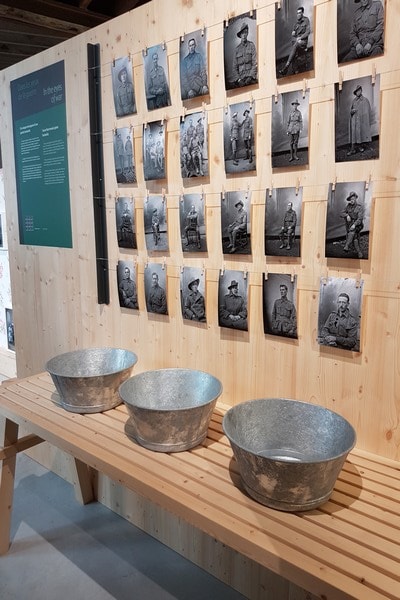 ©SommeTourisme
©SommeTourisme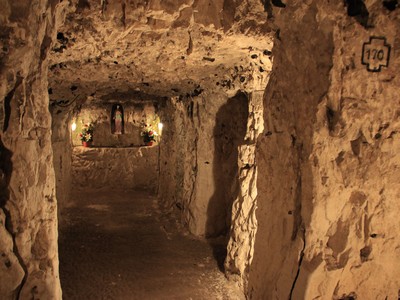
 ©FLeonardi
©FLeonardi
 ©P.Noiret
©P.NoiretVignacourt 14-18
Interpretation Centre
During the Great War, Vignacourt was used for French and Allied logistics. Louis and Antoinette Thuillier lived in the village and were keen amateur photographers. They began taking photographs of the soldiers of different nationalities who were billeted in the village in their farmhouse.
In 2010, an Australian television station (Channel Seven) uncovered 4000 photographic plates in the Thuillier’s old attic and, conscious of the exceptional character and historical value of this collection, the French and Australian authorities now wish to share its history.
Vignacourt 14-18 welcomes you to the Thuillier’s renovated farmhouse which is devoted to their photograph collection. This exhibition tells the story of life behind the lines. It’s a history full of humanity, where the little personal stories provide insight into the greater history of the war.
Vignacourt 14-18 - +33 (0)6 73 69 55 49
Château of Bertangles
The Chateau served as headquarters to the Australian Expeditionary Force commanded by General Sir John Monash in 1918 and therefore the decisive attacks of the Battle of Amiens.
Château of Querrieu
It was here that the famous but fatal order of attack was given for 1 July 1916 at 7.30am, by General Haig, commander of the British armies.
 © Samuel Crampon
© Samuel Crampon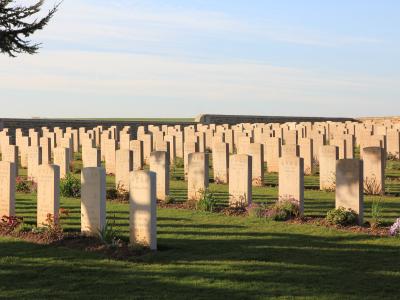 © Samuel Crampon
© Samuel Crampon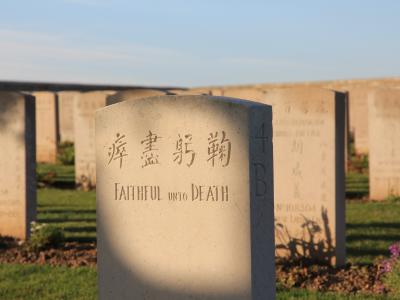 © Samuel Crampon
© Samuel Crampon © Jérôme Halatre
© Jérôme HalatreThe Underground City
of Naours
Initially quarries that were used to shelter local inhabitants, they have lasted through time and now reveal their history to visitors.
During the Great War, the underground cave network was used as an organised tour destination : a means of distraction for soldiers on leave or convalescent behind the front lines.
The Underground City of Naours is home to around 3 000 examples of graffti (found to date) drawn by First World War soldiers : more than 700 are believed to be by Australian soldiers. It is the largest concentration of wall inscriptions on the Western Front.
The 2nd half of 2019 will see the opening of a brand-new Graffiti Museum in Naours. A 100 m² exhibition where both the life-stories of soldiers who visited the caves and the leisure activities they engaged in behind the lines are related in English and French.
Underground City of Naours - +33 (0)3 22 93 71 78

The Unified Command Hall
in Doullens
On the 21st March 1918, Ludendorff unleashed the most formidable offensive since 1914 from the Hindenburg Line, along a 70 kilometre front.
He had two objectives : to separate the British and French armies, and to capture Amiens. The situation, if it had persisted, could have precipitated an irreversible military catastrophe.
On the 26th March, Presidents Poincaré and Clemenceau, Generals Pétain and Foch, Lord Milner and General Haig met in Doullens Town Hall, and decided to create a unified command.
On the 18th July, Foch launched his final counter-offensive which led to the Armistice of the 11th November.
The Unified Command Hall, situated in the Doullens Town Hall, touches on this key moment with a stained-glass window by Gérard Ansart, two paintings by Lucien Jonas, busts and photographs.
Doullens Tourist Office - +33 (0)3 22 32 54 52
Useful information
Behind the lines
- Amiens Tourist Office
23, place Notre-Dame - 80000 Amiens
Tél +33 (0)3 22 71 60 50
amiens-tourisme.com
- Vignacourt 14-18 Interpretation Centre
196, rue d'Amour - 80650 Vignacourt
Tél +33 (0)6 73 69 55 49
Vignacourt1418.com
- The Underground City of Naours
5 rue des Carrières - 80260 Naours
Tél +33 (0)3 22 93 71 78
citesouterrainedenaours.fr
- Doullens Tourist Office
2, avenue du Maréchal Foch - 80600 Doullens
Tél +33 (0)3 22 32 54 52
tourisme-territoirenordpicardie.com
- Château of Bertangles
Rue du Château - 80260 Bertangles
Tél +33 (0)3 22 93 68 36
chateaubertangles.com
- Château of Querrieu
3, rue du Bois Galhaut - 80115 Querrieu
Tél +33 (0)3 22 40 14 09
chateaudequerrieu.fr
Can't-miss places
Behind the lines
- Visit the Amiens Cathedral, seen as a memorial to WW1, and discover the cultural heritage of Amiens.
- Go back in time at Vignacourt14-18 to discover the unbelievable set of photos of soldiers and civilians.
- Descend 30 metres beneath the ground and visit the Underground City of Naours to find soldiers' graffiti.
- See the well-known Unified Command Hall in Doullens.
- Visit the Château of Bertangles, which served as headquarters to the Australian Expeditionary Force.
- Visit the Château of Querrieu, where the fatal order of attack was given for 1 July 1916.
- Make a detour in the Somme Bay to pay tribute to Chinese labourers at Noyelles-sur-Mer.
Join us on Instagram !Somme1914_1918
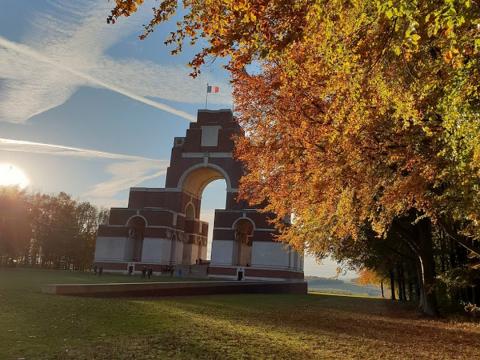 ACarrier
ACarrierWant to see the main sites of remembrance in the Somme ? Museums, memorials, battlefields and other sites to discover here !
Join the official account on Instagram : Somme1914_1918
Follow us on Facebook !Great War Centenary in the Somme
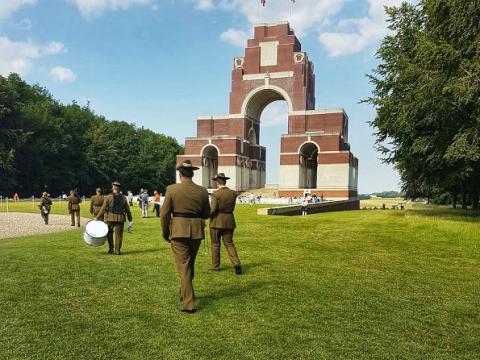
Want to know everything about the Somme Battlefields (events, sites, commemorations...) ? Follow the official page of the remembrance tourism in the Somme !
Follow us on Facebook : Great War in the Somme
You'll like too
Cathedrals, churches and abbeys
Tours et Trésor de la Cathédrale
Museums and places of interest



